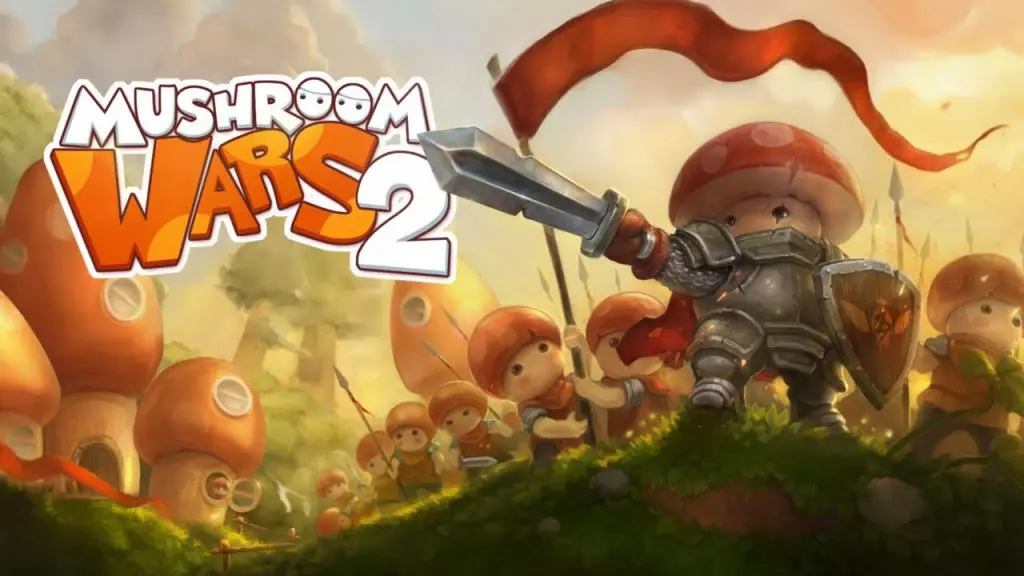War of the Spores
It took almost a year and a half for the Nintendo Switch to get a good strategy game. This is patently absurd, especially considering the Switch’s portability, coupled with the fact that strategy games remain one of the most popular genres on mobile devices. Fret not, reader, for the mushrooms are here to ease your pain and allow you to put on your feathered commander’s hat in Mushroom Wars 2.
Developed by Zillion Whales, a small team that primarily develops games for mobile devices, Mushroom Wars 2 aims to answer the age-old question: what if a bunch of mushrooms fought each other? Across a campaign that covers four tribes of shrooms and over a hundred levels, Zillion Whales delivers with strategy goodness, and surprisingly deep yet accessible combat.
Multiplayer is definitely where this game shines. Thankfully, there is a pretty robust local multiplayer with up to four players, each controlling a different tribe of shrooms. The game also offers both ranked and unranked online multiplayer, which ran surprisingly well given the fact that Nintendo isn’t known for there excellent netcode or online services. For the matches themselves, there are three game modes, each a slight variation on the others. The primary mode is Conquest, in which the goal is to capture all of the enemy bases. Next up is King of the Hill mode, where the goal is to hold a certain couple of bases for as long as possible. Finally, Domination has the player capturing all the special buildings on the map. The modes are fairly similar, but offer enough variety to keep players coming back to each of them.
Once the actual game match starts, players control a tribe of mushrooms and a few buildings on one side of the map. The other buildings are either occupied by enemy players, or grayed out, indicating that they are available for anyone to conquer immediately. Attached to every occupied base is a number that indicates the number of troops within the base. The strategy comes from moving troops to other buildings on the map, done by holding the R button and choosing a building on the map. Troops can be deployed as a percentage of the available number, either 25, 50, 75, or 100 percent of them at a time, each number handily assigned to a face button. As different waves of troops are moving around the battlefield, the buildings are replenishing them, albeit at a relatively slow rate. This can be sped up by upgrading the building, of which there are a few varieties, including one that fires cannons at any enemy who dares enter the dotted circle around the building. Upgrading these buildings does take a little bit of time, so it becomes a risk and reward scenario when you realize that you’re about to be overwhelmed by the enemy fungi.
And don’t get it twisted: this is a numbers game through and through. If you can outproduce the enemy and overwhelm them with hundreds of shrooms, you’ll win nine out of ten times. Being able to do this while under pressure from the enemy is easier said than done, however. Shaking up this dynamic are the heroes, special troops that can be selected at the beginning of a match and possess special abilities, like the ability to take over a building without alerting the enemy teams, or the ability to make troops move faster. They’re a welcome addition, and add just the right dash of additional strategy on top of the addicting base game.
Throughout the campaign, a sense of repetition and familiarity will wash over the player, as most of the levels boil down to the same goal and strategy. Despite this, fans of mobile games will welcome the fact that each level has four different difficulties with which to earn a star, so completionists have a lot of game here to work through. The campaign was a little too repetitive for me to want to keep replaying the levels over and over again for stars, but I know some will, so know that’s an option!
At least there’s variety in the tribes you play as, each with their own lush, beautiful loading screen artwork, a surprising high point in the game’s presentation. It certainly makes up for the forgettable story, which did little to set up the conflict in the campaign. In contrast, the loading screen artwork does a better job of telling the story, showing warring tribes mid-conflict, or the scarred heroes who fought for their people (well, “people”, you know). The music was also largely forgettable, but got the job done. I won’t be humming the tunes any time in the future, but it was standard fare for mobile titles.
Overall, this is a solid mobile strategy experience. The base game is simple enough for new players to pick up quickly, but nuanced enough that adept players will plan out moves like a chess board, each trying to get just a half-step ahead of the other in a battle of attrition. The presentation was a mixed bag, with unexpectedly beautiful hand-drawn artwork for the campaign loading screens. Music and story suffered, however, but not enough to drag the experience down or distract from the admittedly addicting base gameplay. If you’re looking for a strategy fix on the go, you could do a lot worse than Mushroom Wars 2, available now on Nintendo Switch for $20, on Steam for $15, or on mobile devices for free with in-app purchases.
